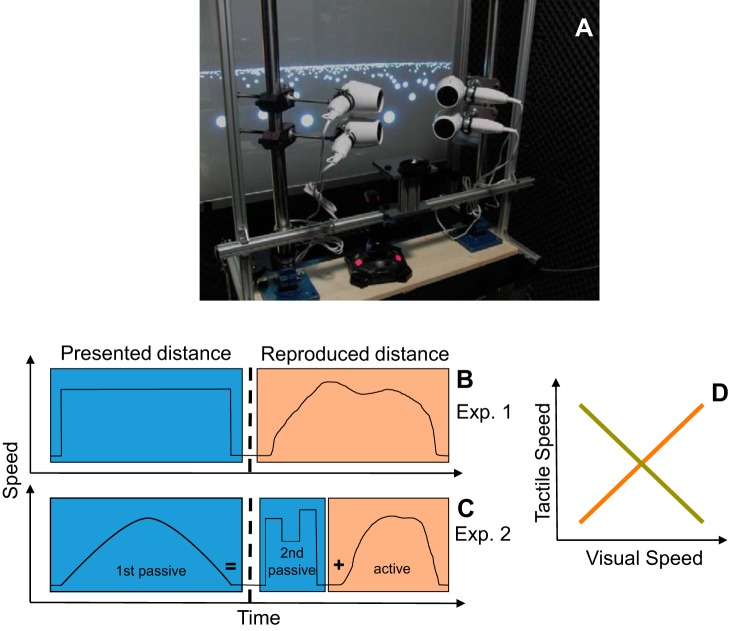Fig. 1.
A: experimental apparatus consisting of a visual display, a chin rest, 4 modified hair dryers that produced the tactile simulation of motion, and a joystick that allowed the subjects to control the speed of simulated self-motion. B and C: schematic time course of the trials in experiments 1 and 2. Parts of a trial in which the subjects passively observed the self-motion stimulus are marked by a blue background while pink background indicates the parts in which the subjects actively reproduced the previously observed distance. D: relationship between the visual speed and the speed of the air flow in the congruent (brown line) and the incongruent (green line) experimental conditions.

